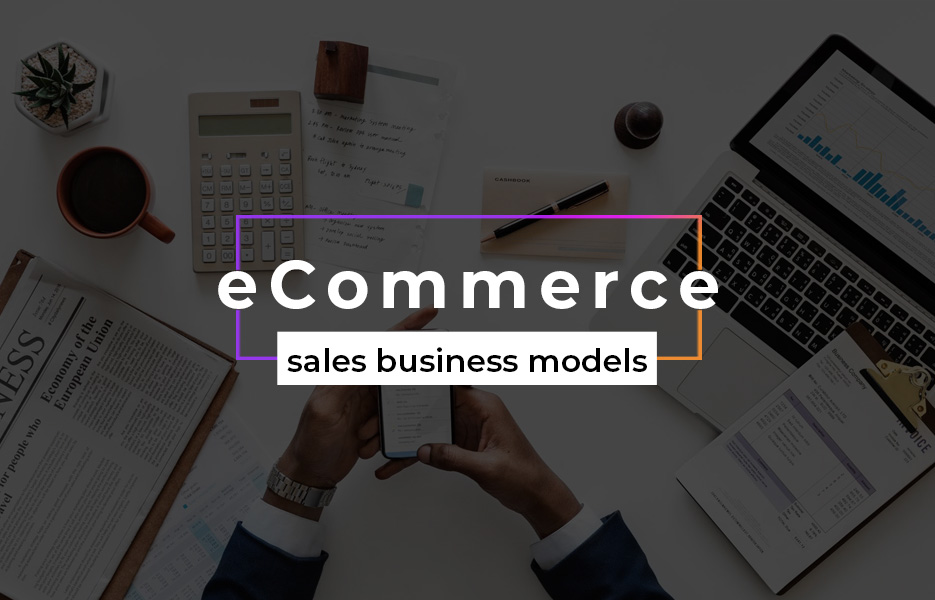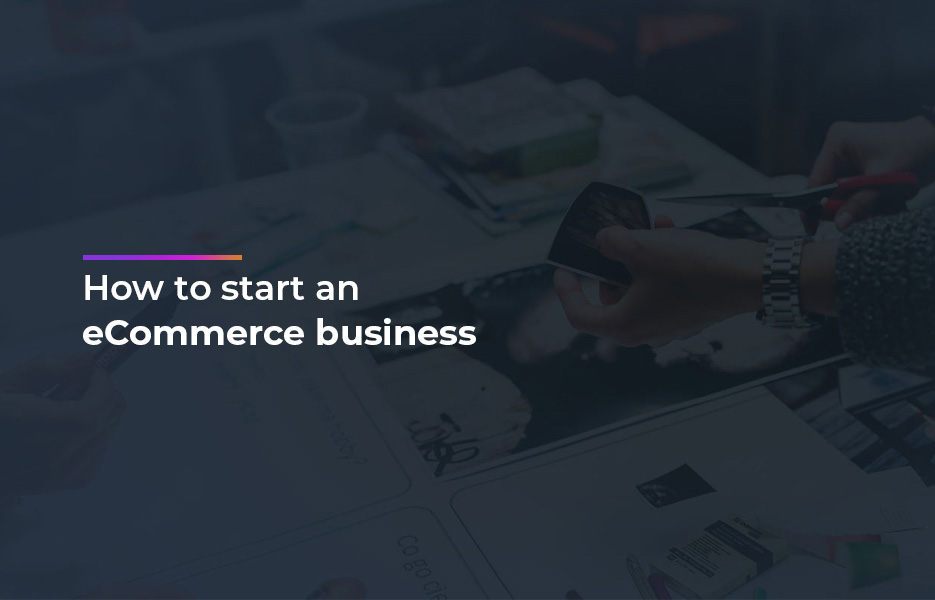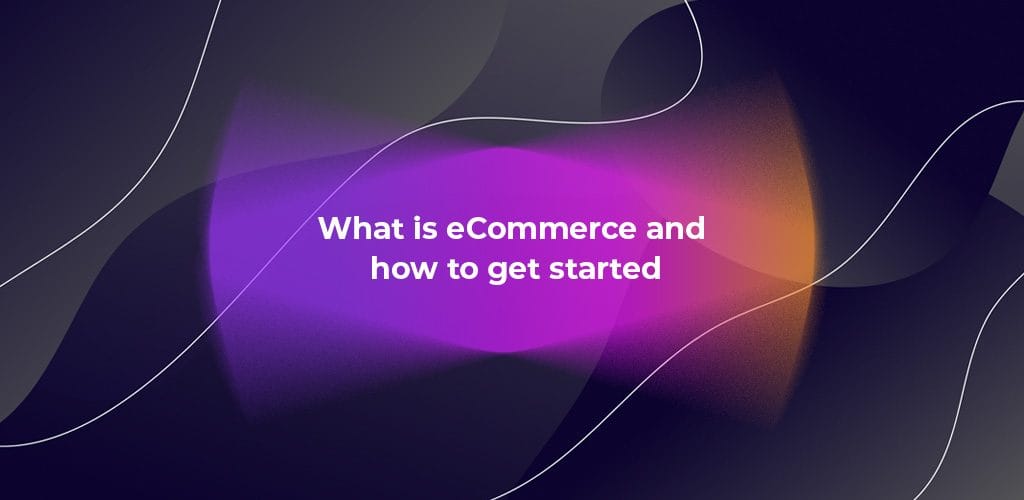What is eCommerce and how to get started
Definition of eCommerce

eCommerce is any type of business transaction conducted online. Generally, when people talk about eCommerce, they are referring to online shopping – sales made via a website or app, through any device that is connected to the internet. But it’s not restricted to buying and selling! Other examples of eCommerce businesses include wholesale, DropShipping, crowdfunding, subscriptions, physical products, digital products and services including banking.
eCommerce sales business models

eCommerce selling is generally divided into four models, defined by who is involved in the sale.
1 Business to business (B2B)
This is where businesses sell to other businesses, often in bulk. They will often provide bigger discounts per item where the buyer purchases larger numbers of that item. Suppliers may have specialist B2B websites, allowing businesses to access user-specific prices.
2 Business to consumer (B2C)
This is simply customers buying small amounts of items directly from retailers. Includes weekly grocery shopping from a supermarket, or one-off purchases from internet retailers.
3 Consumer to Consumer (C2C)
C2C has been around for years in one iteration or another – it’s simply consumers reselling an item to another customer. What was once garage salesand car-boot sales are now eBay, Craigslist and Facebook Marketplace.
4 Direct to Consumer (DropShipping)
The DropShipping model is a fulfillment method where a retailer/seller, whether online, offline or both, does not hold stock. When a customer buys a product, the seller simultaneously buys the item from a supplier, who dispatches to the customer. The seller never sees, nor handles the product, and the customer doesn’t know the transaction between seller and supplier occurred as they made their purchase.
Benefits of eCommerce selling
Getting into eCommerce selling can be incredibly rewarding. With numbers like these, there’s no wonder people are taking their first steps into selling! There’s no restrictions to who can get involved either – from students to new parents to retirees, as well as existing retail businesses that want to extend their offering. Typical reasons people cite include that they are looking to expand their income, or that they want a more family-friendly career. Here are seven other reasons to start your eCommerce business!
No time or location restrictions
As eCommerce sales can be made 24/7, 365 days a year, you’re free to handle your business whenever it’s convenient, and wherever it’s convenient! If you have a decent internet connection and a laptop or smartphone, you’re free to manage your business. On safari in South Africa? No problem! On your commute into London on the train? Check those orders and contact your suppliers. Camping at the weekend with the family? As long as you’ve checked there is Wi-Fi, or that you have 4G/5G coverage on the campsite, what are you waiting for? Get out there – you can check your business with a drink by the campfire when the kids have gone to bed.
Low costs
Particularly when adopting the DropShipping model, there are costs are significantly lower compared with traditional retail. As a seller, you don’t need a warehouse – all you need is your laptop, PC or smartphone! Your suppliers take care of storage and delivery charges.
Don’t forget, you don’t have to be selling physical products from a warehouse. You could be selling digital products – via a members area, or via a downloadable. eBooks, courses, even dressmaking patterns are great, as once they are developed, the product can be easily updated, and storage costs are low.
Automated inventory management
There are a plethora of automated inventory management tools available. Most have plenty of additional functionality and integrations with marketplaces, to minimise the risk of overselling. Make sure when you’re doing your research that the systems you shortlist have all the features you need. A great place to start is finding multichannel inventory management software such as Veeqo.
Targeted marketing
Your customer data can help you make business decisions such as what to sell, but you can also use that information to help your marketing efforts. It’s already simple to send personalised emails, and there are plenty of low cost, and free options such as MailChimp! Tailoring the customer experience can increase repeat business, and increase customer trust.
Niche markets can be dominated
Let’s say you’ve identified a niche product that is quite specialist, and it’s not a market that has been capitalised on by other sellers yet. With the right marketing, you can fill that niche before other sellers realise there is a market for that product, and in most cases, you’ll end up being the preferred seller, winning the Buy Box and having the most reviews – which will add up to more sales.
8 incredible eCommerce statistics
- eCommerce is growing 23% year-on-year
- Global spending online has reached around $2.8 trillion this year
- Retail eCommerce sales worldwide are expected to approach $5 bn by 2021
- Estimated 1.92 billion digital shoppers internationally in 2019
- Mobile retail is expected to reach $3.56 bn by 2021, increasing by 39.1% last year compared with 2017
- The largest eCommerce markets currently are China and the USA, making $740bn and $561bn respectively
- The most popular category being searched for worldwide is clothing
- More than half of UK buyers have made a purchase on eBay in the last six months
How to start an eCommerce business

At first, starting your eCommerce business might appear to be enormously time-consuming. However, with the careful research, understanding the steps to growth, and the right tools, your business can thrive, and need much less time, since automation can do much of the work for you.
Choose your systems
Considering how important the right tools for the job are, it’s important not to rush this decision. What works for someone else might not be the best fit for you. You wouldn’t buy a new car purely on a recommendation – what an expensive risk! It MIGHT turn out OK, but what if the car doesn’t handle the way you like? Every car will get you from A to B, but you might not enjoy the drive, or find it is reliable. It’s the same for your business systems – you must find the one that suits you best.

Most systems will give you a free trial period, or free until you hit a certain threshold, so take advantage. Make a shortlist of the tools that have the features you want, then thoroughly test each of them. Don’t waste your time – and money – by signing up for the wrong system.
Choose your product
Again, we’re going to tell you – time and research are key here. Finding a profitable idea – products with adequate margins, that can allow you to scale the business is your first challenge. Once you’ve worked that out, all you need to do is find your supplier(s). That can be easier said than done, especially if you’re sourcing from overseas.
It’s a good idea to have contingencies in place though. What if there’s suddenly a massive increase in demand that your supplier can’t fulfil by themselves? What if your supplier goes out of business suddenly? You don’t want to lose those orders. The solution can be as simple as identifying a secondary supplier, so should the worst – or best – happen, you’re covered. If you’re using Avasam, it’s easy to find reliable suppliers – whether you want to work with one, or all of our suppliers for a comprehensive store.
Develop your branding
Simply copying another business won’t cut it. It’s easy to spot, and nobody likes a cheap imitation – it doesn’t exactly scream that you can trust the company if it is a rip-off of another one. Create high quality branding, including choosing your business name, with your business aims and target customers in mind. Once you’ve established your branding, you’ll be better able to tackle your marketing. You can develop a strong social media following before you launch – building likes and shares to develop interest.
Decide where to sell
Are you going to develop your own eCommerce website? If so, which eCommerce platform is right for you? BigCommerce, WooCommerce, Shopify? What about Amazon and eBay, or other marketplaces such as OnBuy? Are you intending to sell on just UK marketplaces, or are you going to sell on international platforms such as Privalia or Lazada? The sky is the limit, especially when you consider those predicted eCommerce statistics. Check your products suit the marketplace you’re considering carefully though. At best you might waste your time, and at worst you might end up with a legal case on your hands!
Sell, sell, sell!
This is where the fun really starts – once you’ve made your first few sales, you’ll have caught the buzz! Now, keep building – more marketplaces, more social media marketing, more sales – You want to increase your profits and your success!
Track your progress

You need to stay on top of your figures – staying informed means you can make better business decisions. Your sales data can alert you to problems on marketplaces, so you can resolve them quickly and carry on selling! It can also help you identify in which countries you’re selling well, allowing you to expand your operations further.
The challenges of eCommerce
While you can earn a fantastic living from eCommerce, it’s not a magic money-making machine. There is hard work to be done, and challenges to overcome – although the right strategy will help you past these. Here’s a few common challenges (though this isn’t a comprehensive list, other problems might crop up!) and some tips on how to get past them.
Customer trust
Keep in mind, many of your potential customers still remember a time before internet shopping! Older customers might make purchases from trusted marketplaces such as Amazon, but they might be suspicious of your eCommerce store. To gain the trust of all your potential customers, you need to present evidence that your company is trustworthy.
- Your eCommerce website needs to have great content – spelling mistakes look unprofessional, and count against you in terms of SEO
- Make sure updates and patches are applied to your website and any other systems as soon as they are available
- Your customer journey to checkout should be streamlined and hassle-free
- Use secure, trusted checkout functionality that doesn’t require customers to create an account with you, such as PayPal
- Sign up for a review service such as Trustpilot, and add your rating to your website. Don’t forget to comment on these reviews
- Engage with your customers on your social media, particularly when there are complaints. Respond professionally and appropriately – suggest they message you privately, or let them know that you will call them directly
- Have a physical location, or contact number for customer service issues. If customers know they can call you if something goes wrong, they’re more likely to trust you
Ultimately, cautious sellers could end up buying from you via Amazon, but why risk losing that customer to someone else? Build your trust strategy well, and when they find your product by searching Google, they might not head directly to Amazon.
Competition
Although eCommerce has a LOT of potential to make you money, you’re not the only one to discover this! There are almost two million different brands on Amazon alone – that’s a LOT of businesses to compete against. It’s little wonder that over 90% of eCommerce businesses fail in their first year. That’s why it’s essential to do your research. Simply selling the same trending products as everyone else won’t cut it – you have to find a niche. By identifying a niche, you will have less competition, and more chance of capitalising on those sales.

Technical issues
Are you a developer? Chances are, you’re not. But that’s OK! There’s plenty of tools that mean you don’t have to be. If you’ve done your homework right, you might never experience any downtime at all. But even by choosing the most reliable system, it doesn’t necessarily mean you won’t run into issues. Identify someone, or a company, you trust and can turn to if something does go wrong. It’s all about those contingency plans!
Initial spend
Although costs can be minimal within eCommerce, many platforms and systems can be prohibitively expensive, so you need to do your research carefully to avoid ending up out of pocket and disillusioned, like so many are. We wanted to make building an eCommerce business affordable – that’s why Avasam pricing scales up as your business does. It’s free to sign up, and there are no fees until you’re selling over 10 orders per month. Start your business today.








DropShip products from verified suppliers to diversify your inventory and scale your eCommerce business